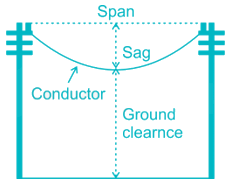Electrical Engineering (EE) Exam > Electrical Engineering (EE) Tests > Test: Power Systems- 3 - Electrical Engineering (EE) MCQ
Test: Power Systems- 3 - Electrical Engineering (EE) MCQ
Test Description
20 Questions MCQ Test - Test: Power Systems- 3
Test: Power Systems- 3 for Electrical Engineering (EE) 2025 is part of Electrical Engineering (EE) preparation. The Test: Power Systems- 3 questions and answers have been prepared
according to the Electrical Engineering (EE) exam syllabus.The Test: Power Systems- 3 MCQs are made for Electrical Engineering (EE) 2025 Exam.
Find important definitions, questions, notes, meanings, examples, exercises, MCQs and online tests for Test: Power Systems- 3 below.
Solutions of Test: Power Systems- 3 questions in English are available as part of our course for Electrical Engineering (EE) & Test: Power Systems- 3 solutions in
Hindi for Electrical Engineering (EE) course.
Download more important topics, notes, lectures and mock test series for Electrical Engineering (EE) Exam by signing up for free. Attempt Test: Power Systems- 3 | 20 questions in 12 minutes | Mock test for Electrical Engineering (EE) preparation | Free important questions MCQ to study for Electrical Engineering (EE) Exam | Download free PDF with solutions
Test: Power Systems- 3 - Question 1
Which of the following is not the correct statement regarding direct current transmission?
Detailed Solution for Test: Power Systems- 3 - Question 1
Test: Power Systems- 3 - Question 2
An ac current passing through a conductor distributes _________ throughout the cross section and is frequency_________
Detailed Solution for Test: Power Systems- 3 - Question 2
Test: Power Systems- 3 - Question 3
The characteristic impedance of a loss less line in called:
Detailed Solution for Test: Power Systems- 3 - Question 3
Detailed Solution for Test: Power Systems- 3 - Question 4
Detailed Solution for Test: Power Systems- 3 - Question 5
Test: Power Systems- 3 - Question 6
The non-uniform distribution of voltage across the units in a string of suspension insulators is due to:
Detailed Solution for Test: Power Systems- 3 - Question 6
Detailed Solution for Test: Power Systems- 3 - Question 7
Detailed Solution for Test: Power Systems- 3 - Question 8
Detailed Solution for Test: Power Systems- 3 - Question 9
Detailed Solution for Test: Power Systems- 3 - Question 10
Test: Power Systems- 3 - Question 11
Which of the following is most commonly used is secondary distribution?
Detailed Solution for Test: Power Systems- 3 - Question 11
Test: Power Systems- 3 - Question 12
For a fault at terminals of the synchronous generator fault current to be maximum:
Detailed Solution for Test: Power Systems- 3 - Question 12
Detailed Solution for Test: Power Systems- 3 - Question 13
Detailed Solution for Test: Power Systems- 3 - Question 14
Detailed Solution for Test: Power Systems- 3 - Question 15
Detailed Solution for Test: Power Systems- 3 - Question 16
Test: Power Systems- 3 - Question 17
Which of the following relay, operates when current exceeds a present value?
Detailed Solution for Test: Power Systems- 3 - Question 17
Detailed Solution for Test: Power Systems- 3 - Question 18
Detailed Solution for Test: Power Systems- 3 - Question 19
Test: Power Systems- 3 - Question 20
Two areas A and B have equal connected loads however load diversity in area A is more than in B then:
Detailed Solution for Test: Power Systems- 3 - Question 20
Information about Test: Power Systems- 3 Page
In this test you can find the Exam questions for Test: Power Systems- 3 solved & explained in the simplest way possible.
Besides giving Questions and answers for Test: Power Systems- 3, EduRev gives you an ample number of Online tests for practice
Download as PDF





















